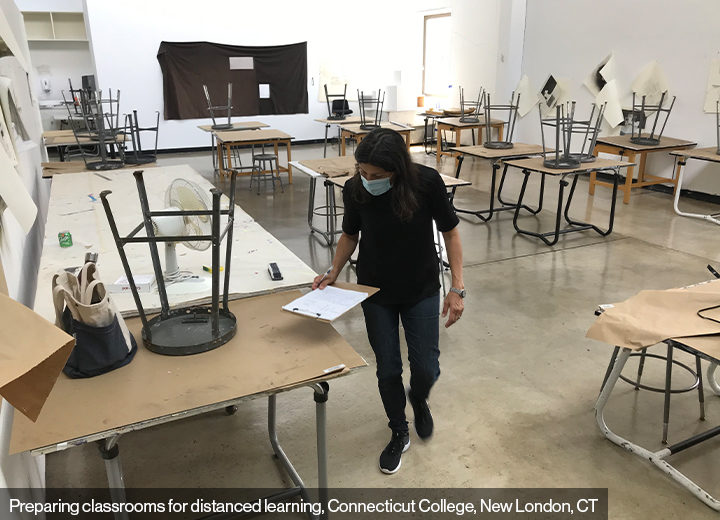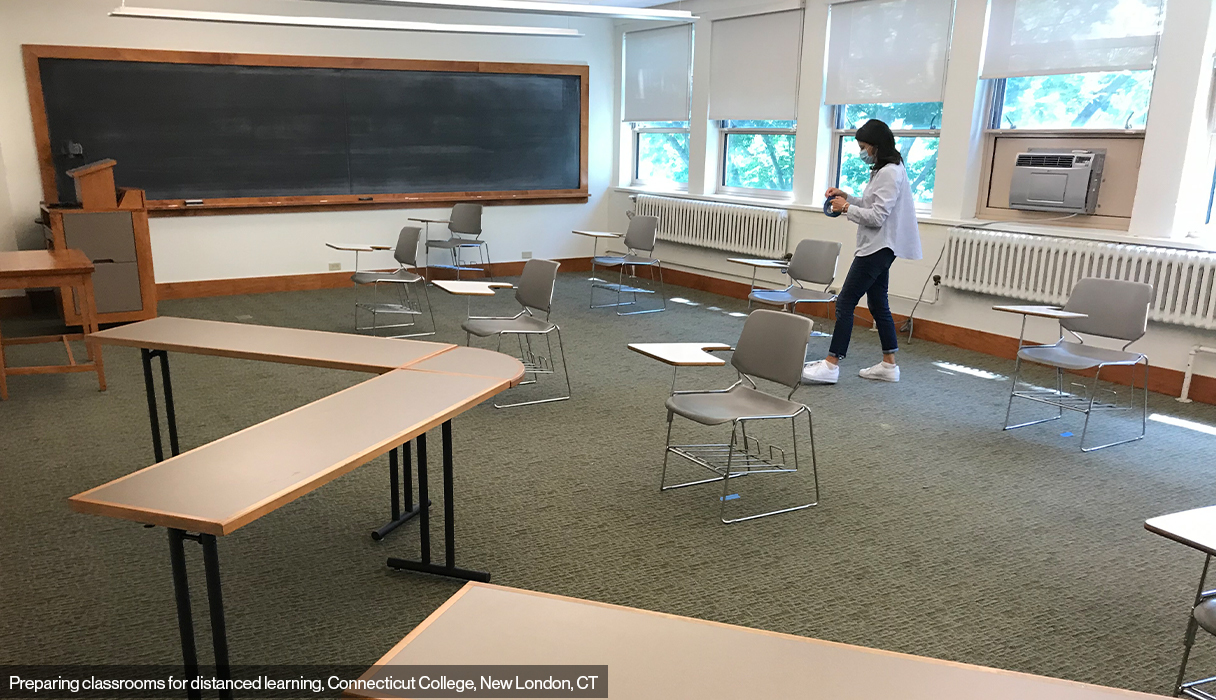Last spring, the COVID-19 pandemic required colleges and universities to adapt to operating with reduced budgets, remote staff, and dispersed student populations. The pandemic has fostered innovations such as hybrid education models and pop-up classrooms while precipitating trends of remote learning and adaptive reuse of campus buildings. As designers of academic and residential facilities, we asked our clients: what has worked and what has not?
Here are some of their answers.
Results
Biggest
Issues
- Student compliance with social
distancing guidelines
- Communication inefficiency
between remote workers
- Reduced budgets due to
construction delays, lower enrollment, and limited residence hall
capacity
- Determining meaningful
indicators for decision making when facing data overload and variable
public policy
What Has
Worked
- A Covid Task Force that met
multiple times per week to address issues as they arose
- Critical management team
activities (CMIT) and a horizontally integrated organizational structure
that buoyed staff during the transition to remote work
- A facilities-led response that
provided a framework for university reopening
- App implementation to monitor flow of people on campus and track community spread
- Reduced student population on
campus
- Converted multi-student
bedrooms into singles and created quarantine dorms
- Outdoor learning
- Hybrid educational models with
greater emphasis on remote learning
- Condensed spring semester with
more time for quarantine after holiday travel and elimination of
mid-semester breaks
- Increased cleaning of all
shared spaces
- Consistent testing and support
of university medical institutions
Questions
Raised due to COVID-19
- How has Covid changed the
physical culture of the university? How has Covid changed construction
schedules?
- How did you maintain student
life with an increase in remote learning and off-campus housing?
- How did you foster community
among in-residence students while still maintaining physical distance in
communal environments such as dining halls and dorms?
Design and
Financial Strategies for the Future
- Leveraging hybrid learning to
reach more students
- Utilizing university buildings
for conferences and alumni events during academic off-season
- Assigning some departments to
a permanent work-from-home model
- Hoteling to provide greater
flexibility for existing university spaces
- Apartment-style housing, both
on and off-campus, to address students' changing living preferences and
enable physical distancing when necessary
- Renovating university
buildings rather than building new in accordance with broader public
health and sustainability objectives
- Budgeting to a surplus to
better weather future pandemics
Process
Colleges and
Universities
- University of Virginia
- Yale University
- University of Maryland,
Baltimore County
- Fairfield University
- University of Connecticut
- Connecticut College
Position of
Participants
- Associate Provost
for Academic Support and Classroom Management
- Capital Program Director,
Office of Facilities
- Senior Associate Vice
President of Administrative Services
- Vice President for Facilities
Management
- Associate Vice President,
Master Planner and Chief Architect
- Vice President Finance and
Administration
Methodology
- Qualitative
Analysis
- Interviewed and surveyed
clients and contacts
- Analyzed responses and
identified trends
- Distributed results to
participants and the public

